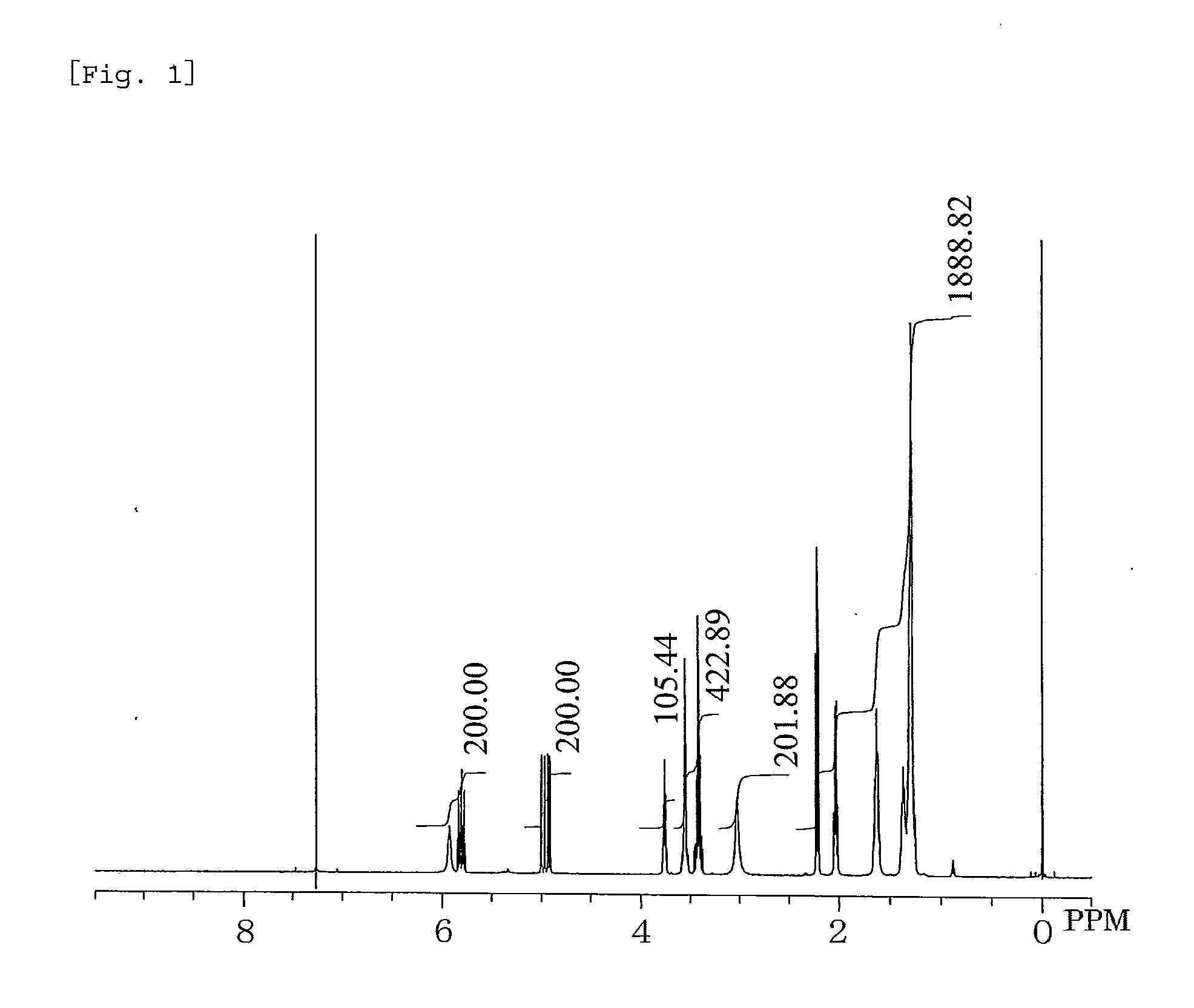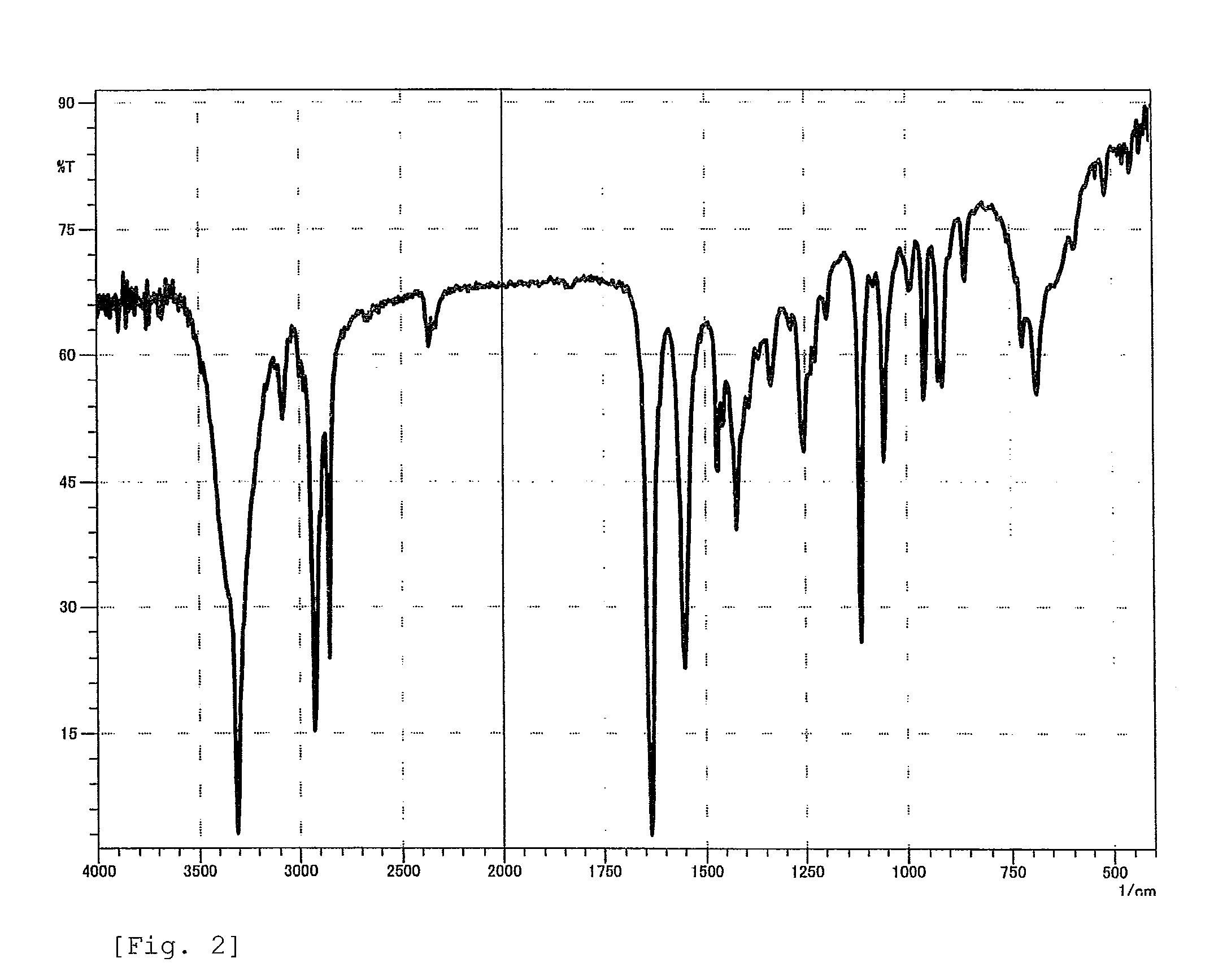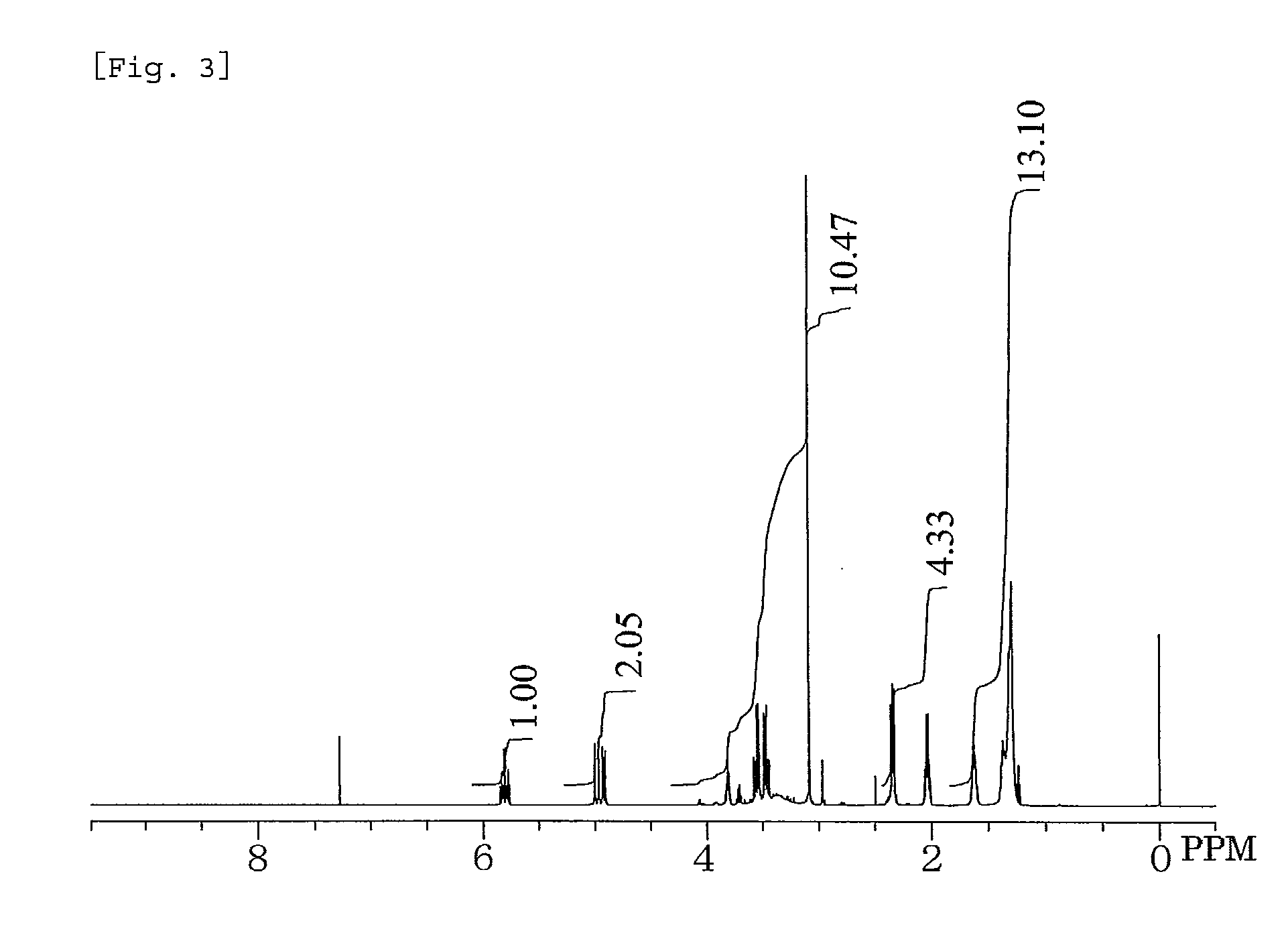Dihydroxypropylamide-modified polysiloxane compound
- Summary
- Abstract
- Description
- Claims
- Application Information
AI Technical Summary
Benefits of technology
Problems solved by technology
Method used
Image
Examples
example 1
Synthesis of 3-(10-Undecenoylamido)propane-1,2-diol
[0060]In a 1-liter five-necked flask equipped with a reflux condenser, a nitrogen inlet with a three-way stopcock, a vent with a three-way stopcock, agitator blades with a decompression seal, and a thermometer were placed 333.15 g (1.68 mol) of methyl 10-undecenoate, 157.66 g (1.73 mol) of 3-aminopropane-1,2-diol, and 3.78 g (16.8 mmol) of a 24% solution of sodium methoxide in methanol. The mixture was subjected to a reaction by heating with stirring at 110° C. to 115° C. at a reduced pressure of 250 hPa to 40 hPa for 9 hours while distilling off formed methanol, cooled to room temperature, and thereby yielded a pale yellow crude product which is solid at room temperature. This was combined with 396 g of ethanol, heated at 80° C. with stirring, cooled to give crystals, the crystals were separated by filtration, washed two times sequentially with 100 g of and 150 g of ethanol, respectively, dried to a constant weight, and thereby yie...
example 2
Synthesis of 3-[N-Methyl(10-undecenoylamido)]propane-1,2-diol
[0061]In a 1-liter five-necked flask equipped with a reflux condenser, a nitrogen inlet with a three-way stopcock, a vent with a three-way stopcock, agitator blades with a decompression seal, and a thermometer were placed 317.29 g (1.60 mol) of methyl 10-undecenoate, 173.27 g (1.65 mol) of 3-aminopropane-1,2-diol, and 3.78 g (16.0 mmol) of a 24% solution of sodium methoxide in methanol. The mixture was subjected to a reaction by heating with stirring at 108° C. to 117° C. at a reduced pressure of 500 hPa to 50 hPa for 24.5 hours while distilling off formed methanol, cooled to room temperature, diluted with 290 g of ethanol with stirring, combined with 50 g of an inorganic synthetic adsorbent (trade name “Kyowaad 700”, supplied by Kyowa Chemical Industry Co., Ltd.), heated with stirring at 75° C. for 2 hours, and filtrated. The filtrate was concentrated on a rotary evaporator, dried to a constant weight in a vacuum desiccat...
example 3
[0062]In a 300-ml five-necked flask equipped with a reflux condenser having a hydrogen inlet with a three-way stopcock, a nitrogen inlet with a three-way stopcock, a dropping funnel, agitator blades with a decompression seal, and a thermometer were placed 2.93 g of a dimethylsiloxane-methylhydrosiloxane copolymer (trade name “KF-9901”, supplied by Shin-Etsu Chemical Co., Ltd., a compound represented by Formula (4) where R1 to R9 are methyl groups; hereinafter also referred to as “KF-9901”) and 0.17 g of a 0.2 percent by weight isopropanol solution of chloroplatinic acid hexahydrate. Independently, a mixed solution of 2.28 g (16.2 mmol) of 1-decene, 0.54 g (1.8 mmol) of 3-[N-methyl(10-undecenoylamido)]propane-1,2-diol, and 5.8 g of isopropanol was placed in the dropping funnel, and the reactor (flask) was purged with nitrogen. The mixed solution was added dropwise from the dropping funnel over one hour with stirring at 40° C., the mixture was heated to 80° C. over 3 hours, followed b...
PUM
 Login to View More
Login to View More Abstract
Description
Claims
Application Information
 Login to View More
Login to View More - R&D
- Intellectual Property
- Life Sciences
- Materials
- Tech Scout
- Unparalleled Data Quality
- Higher Quality Content
- 60% Fewer Hallucinations
Browse by: Latest US Patents, China's latest patents, Technical Efficacy Thesaurus, Application Domain, Technology Topic, Popular Technical Reports.
© 2025 PatSnap. All rights reserved.Legal|Privacy policy|Modern Slavery Act Transparency Statement|Sitemap|About US| Contact US: help@patsnap.com



